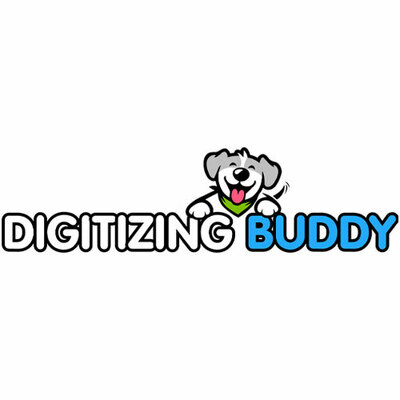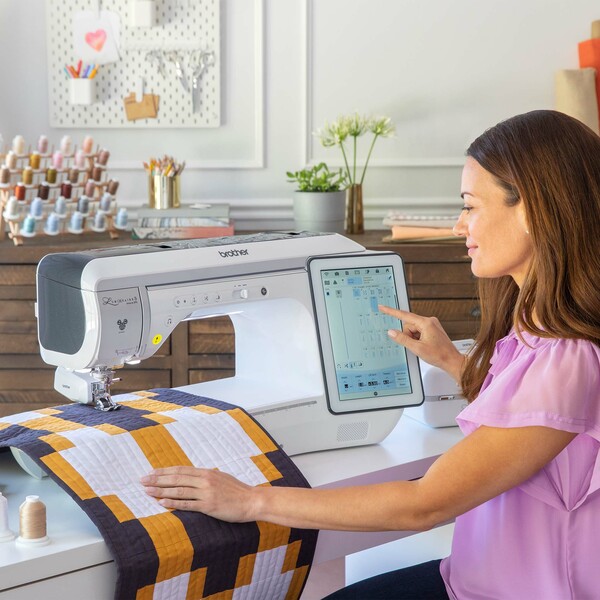Notifications
ALL BUSINESS
COMIDA
DIRECTORIES
ENTERTAINMENT
FINER THINGS
HEALTH
MARKETPLACE
MEMBER's ONLY
MONEY MATTER$
MOTIVATIONAL
NEWS & WEATHER
TECHNOLOGIA
TV NETWORKS
VIDEOS
VOTE USA 2026/2028
INVESTOR RELATIONS
DEV FOR 2025 / 2026
ALL BUSINESS
COMIDA
DIRECTORIES
ENTERTAINMENT
FINER THINGS
HEALTH
MARKETPLACE
MEMBER's ONLY
MONEY MATTER$
MOTIVATIONAL
NEWS & WEATHER
TECHNOLOGIA
TV NETWORKS
VIDEOS
VOTE USA 2026/2028
INVESTOR RELATIONS
DEV FOR 2025 / 2026
About Me
 Digitizing Buddy
Digitizing Buddy At Digitizing Buddy, we do our best to ensure our clients are 100% satisfied with our services. Our outputs come with sharper designs and enhanced details. Plus, they will help you minimize thread breakage. Beyond our high-quality outcomes, we provide first-class sales support to ensure our clients have the best experience.
 Digitizing Buddy -
Apr 10 -
Business -
Digitize Logo for Embroidery
-
118 views -
0 Comments -
0 Likes -
0 Reviews
Digitizing Buddy -
Apr 10 -
Business -
Digitize Logo for Embroidery
-
118 views -
0 Comments -
0 Likes -
0 Reviews

Embroidery transforms flat logos into textured, dimensional works of art—but only if the digitizing process is done correctly. To digitize logo for embroidery, you need more than just a basic file conversion. It demands technical expertise, artistic judgment, and a deep understanding of how thread interacts with fabric.
This guide walks through the complete logo digitization process, from preparing your artwork to selecting stitch types and troubleshooting common issues. Whether you're a business owner creating branded uniforms or a hobbyist personalizing gifts, learning how to digitize a logo for embroidery using professional techniques will help you achieve crisp, durable results every time.
Embroidery brings a unique charm to branded logos, but it also comes with a distinct set of challenges that must be carefully managed to ensure high-quality results.
Brand Integrity – Maintaining Recognizable Details
Logos are the face of a brand, and preserving their identity in embroidery form is critical. Intricate details, small text, and fine lines often get lost in translation if not digitized properly. Skilled digitizers must simplify complex elements without compromising the visual essence of the brand.
Size Limitations – Ensuring Readability at Small Scales
Logos often need to be embroidered on small areas like hat fronts, shirt cuffs, or sleeves. At these sizes, even slight inaccuracies can render a logo unreadable. Adjustments to font thickness and element spacing help maintain clarity without losing the original design intent.
Color Accuracy – Matching Corporate Colors Precisely
Threads don’t offer the same infinite palette as digital design software. Matching corporate colors requires careful thread selection, often blending similar shades or using strategic stitch directions to reflect light in a way that simulates the desired tone.
Fabric Variations – Adapting to Different Materials
Each fabric type—be it a stretchy polo, structured cap, or delicate jacket—reacts differently to stitches. A good digitizer tailors the design for the specific material, adjusting underlay, stitch density, and direction accordingly.
Using overly dense stitching, which causes fabric puckering
Incorporating thin lines that disappear when stitched
Failing to apply proper underlay, leading to unstable embroidery
Incorrect pull compensation, which distorts the logo’s shape over time
Avoiding these pitfalls is essential to achieving polished, professional embroidered logos.
Vector files (AI, EPS, PDF) - Allow infinite scaling without quality loss
High-resolution PNG - Minimum 300 DPI with transparent background
Avoid JPGs - Compression artifacts create fuzzy edges
Simplify complex gradients into solid color blocks
Thicken any lines under 1.5mm
Ensure text is at least 1/4" tall
Separate layered elements for color sequencing
Best for: Borders, text, and narrow elements
Ideal width: 3-6mm
Benefits: Creates shiny, raised appearance
Limitations: Not suitable for large areas
Best for: Solid color fields and backgrounds
Density range: 4-7 stitches/mm
Benefits: Provides full coverage
Limitations: Can feel stiff if too dense
Best for: Fine details and outlining
Common uses: Hairlines, delicate patterns
Benefits: Maintains fabric flexibility
Limitations: Less durable than other stitches
Stabilizes the fabric
Prevents top stitches from sinking
Reduces puckering
Improves coverage
Edge Run - Outlines shapes for definition
Center Run - Stabilizes large fill areas
Zigzag - Adds dimensional foundation
Grid - Prevents distortion on stretch fabrics
Light fabrics: Lower density (4-5 stitches/mm)
Heavy fabrics: Higher density (5-7 stitches/mm)
Stretch materials: Balanced density with pull compensation
Adds 10-15% extra width to account for fabric tension
Prevents circles from becoming ovals
Crucial for designs on knits or performance fabrics
Follows natural logo contours
Creates visual movement
Affects light reflection
Stitch a sample on actual production material
Examine under proper lighting
Check tension consistency
Verify color accuracy
Test wash durability
Increasing underlay for stability
Reducing density on delicate fabrics
Adding pull compensation for stretch materials
Simplifying overly complex areas
Brand-critical applications
Complex logo designs
Premium products
Large production runs
Simple geometric designs
Personal projects
Low-stakes items
Willingness to experiment
Wilcom Hatch - Industry standard with advanced tools
Pulse Ambassador - Excellent for production environments
Embrilliance - User-friendly with good features
SewArt - Affordable auto-digitizing
Ink/Stitch - Open-source plugin for Inkscape
Solutions:
Reduce stitch density
Check needle size
Adjust top tension
Solutions:
Increase underlay
Lower density
Use stabilizer
Solutions:
Simplify small elements
Switch to satin stitches
Increase design size
Automatic error detection
Fabric-specific presets
Predictive pull compensation
3D stitch previews
AR garment simulation
Lighting condition renders
Thread waste reduction
Energy-efficient processing
Recycled material guides
Digitizing a logo for embroidery is both a science and an art. The process requires understanding how digital designs translate to physical stitches while maintaining the logo's essential character. By following professional techniques—proper stitch selection, thoughtful underlay, and careful testing—you can create embroidery that does your logo justice.
Remember that even small adjustments can dramatically improve results. Whether you choose to develop digitizing skills yourself or work with professionals, the effort pays off in crisp, durable embroidery that represents your brand at its best.
With these guidelines, you're equipped to transform flat logos into dimensional works of thread art. The journey from design to stitch may be technical, but the results—vibrant, textured, and full of craftsmanship—make every step worthwhile.
